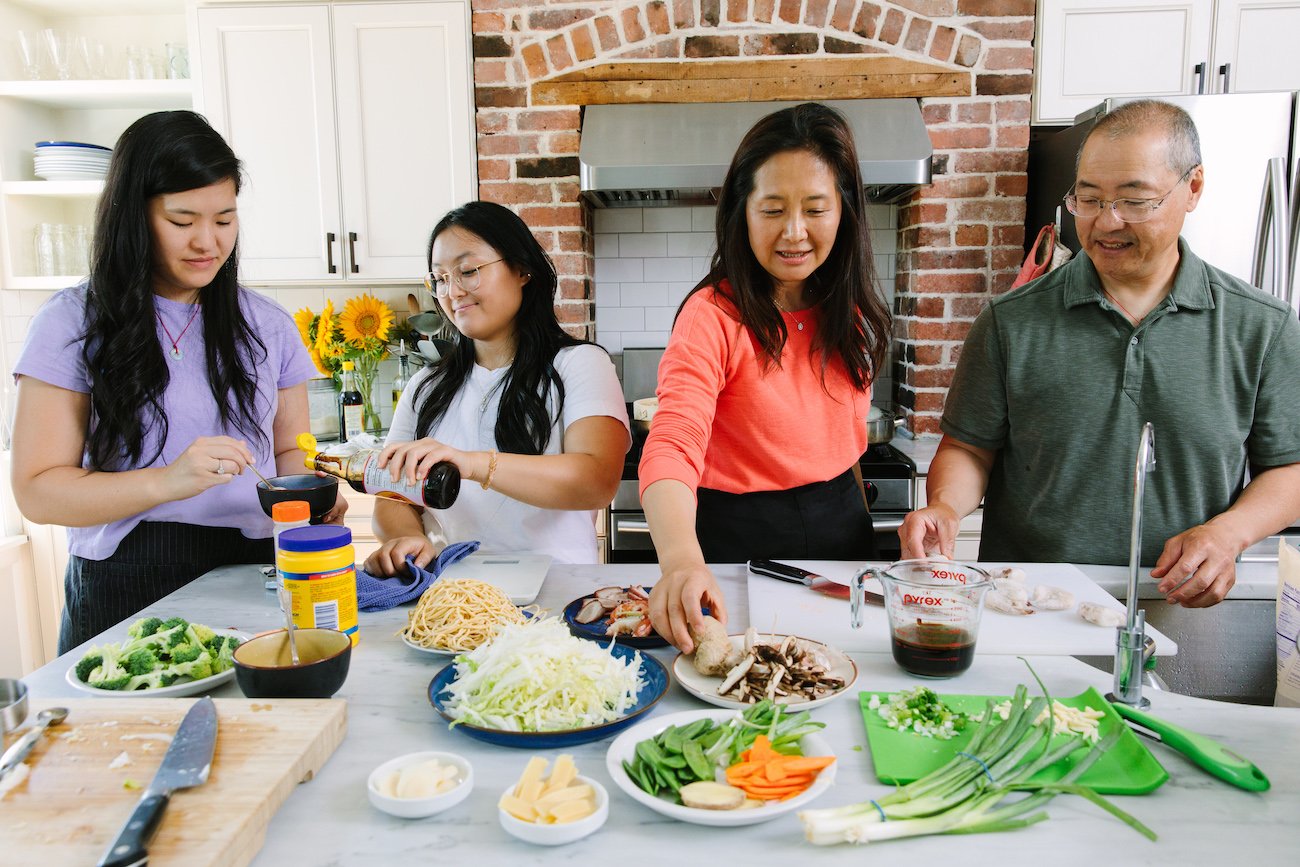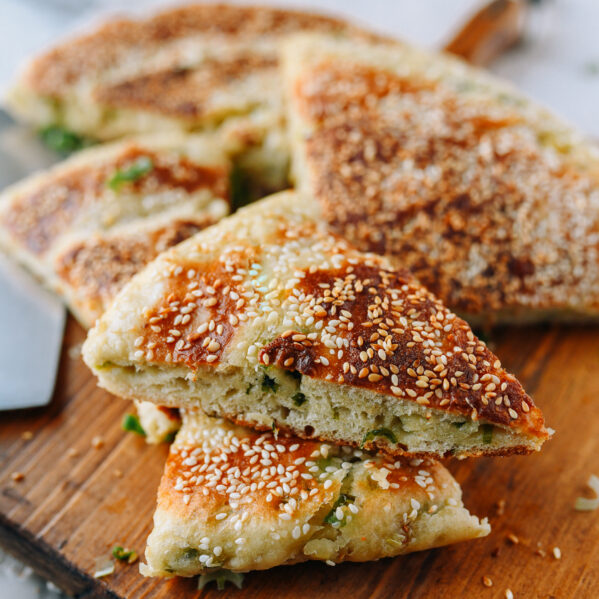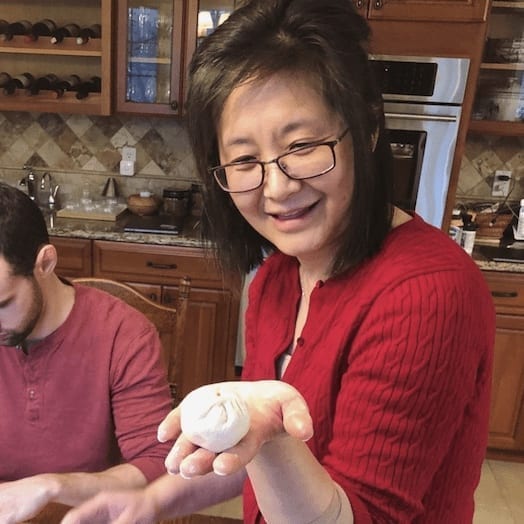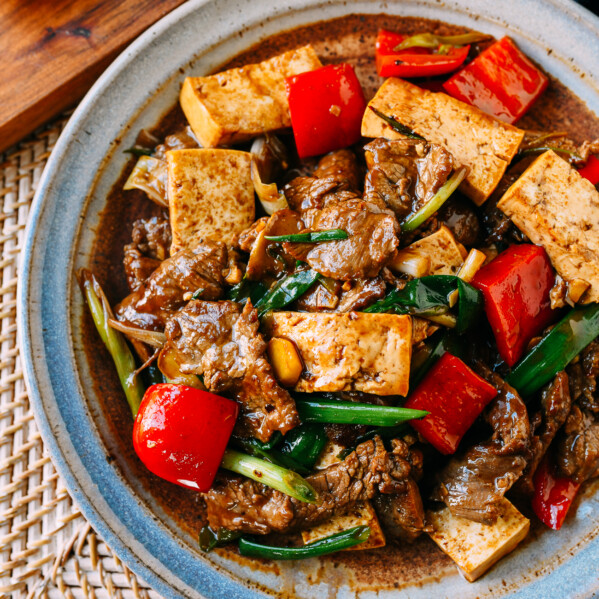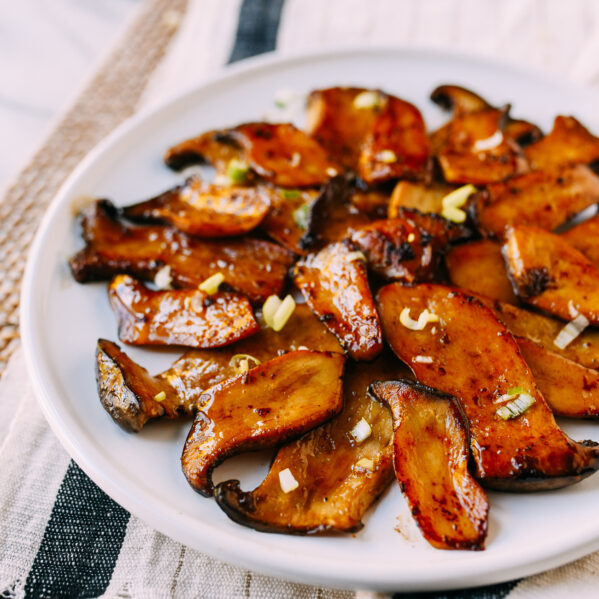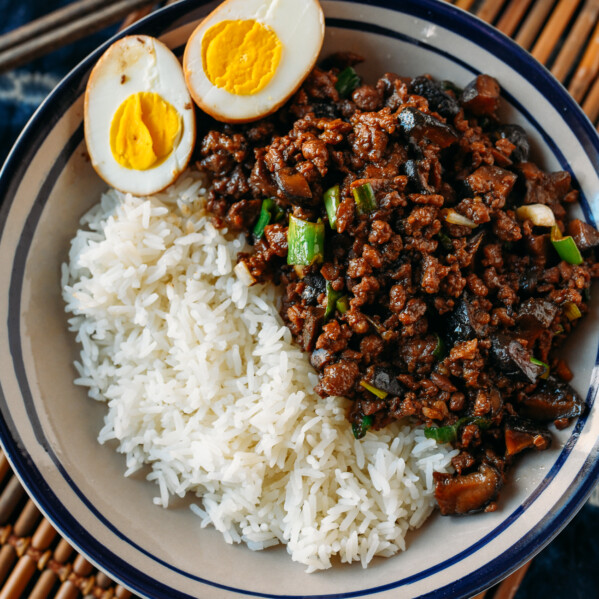
This Pork and Chicken Stock has appeared once already on the blog––in my Shanghai Wonton Soup post. But I’m sharing it today as its own recipe, because I don’t just believe that this stock can stand on its own, I also believe it is invaluable!
The simple reason of course is the flavor. Clear, delicious pork and chicken goodness. A great stock like this is the secret base of some of your favorite Chinese noodle soups and wonton soups.
A Level Up On Flavor
This pork and chicken stock is a level up from my homemade Chicken Stock. While that recipe yields the purest chicken stock, this pork and chicken stock is much more balanced and mellowed, with equal parts chicken and pork flavor. The combined result is a deliciously savory and clear tasting broth that’s hard to describe until you’ve tried it.
When it comes to stock making, most people are smart enough to use bones, but remember that bones are bones, and they can’t really produce enough flavor in the end unless you dramatically increase the bone to water ratio. So it’s important to leave some meat on the bones to achieve the flavor you’re looking for!
In this case, I used pork neck bones because they are cheap, but still have plenty of meat. If you’re processing a pork picnic shoulder, you can also use the large bone with some of the shoulder meat still on it.
As for the chicken parts/bones, I bought a stewing chicken (i.e., an old, tough chicken), though you can also use any combination of chicken backs, necks, and drumsticks, which are all economical options.
Recipe Notes & Tips
Before we start, as always with my more technical recipes, a few suggestions to keep in mind for your stock:
- Always use a large, thick-bottomed stockpot. Liquid reduces much faster in thin-bottomed pots, pans and/or woks. So the thicker the better for yielding as much stock as possible. And of course, a well-fitting lid is key to preventing all your delicious soup from evaporating.
- Simmering is key to making a good stock or broth. Simmering means that the stock has visible slow movement under the right heat setting. When there is no movement in the liquid, that means the heat is too low, and it’s not doing much “cooking,” so the flavor from your bones and meat won’t come out. But when the boiling is too intense, the stock will reduce faster and lose clarity. That is, it’ll turn into murky stock. No one wants that.
- It’s best to salt the stock at the time of application, i.e. right before you’re going to actually consume said stock.
How to Use Your Stock
I’m sure you have big plans for your pork and chicken stock, but in case you needed a few more, here are some of our favorite recipes:
- Cantonese Wonton Noodle Soup
- Shanghai Hot Sauce Noodles
- Chinese Pickled Long Beans Noodle Soup
- Noodle Soup with Pork and Pickled Greens
- Simple Wonton Soup
- San Xian Wontons (Pork, Chicken and Shrimp)
- Egg Drop Soup
- Hot and Sour Soup
This stock also factors into a very special noodle recipe that I’ll be posting in a few days, along with the lard recipe that we posted on Wednesday. Can anyone guess what it is?
Okay, without further ado, let’s talk about how to make this chicken and pork stock!
Chicken & Pork Stock Recipe Instructions
Soak the chicken and pork bones in water for about 1 hour in order to get rid of any blood or impurities.
It’s best to change the water 1 to 2 times over the course of this process. Drain and set aside. This step will help ensure you get a clear stock.
Add all the stock ingredients (except the salt) to a large stock pot, and bring to a boil on the stove.
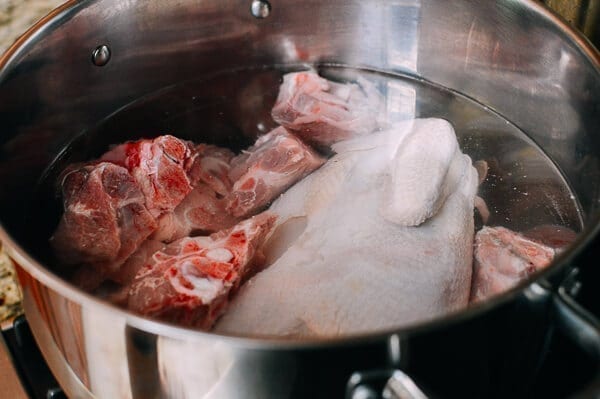
Once boiling, immediately reduce the heat to low. Skim away any impurities (foam, large floating particles, etc.) that float to the top. Cover and simmer at your stove’s lowest setting for at least 5 hours. To help you gauge the right heat level, the liquid in the pot should be moving slowly, but there shouldn’t be any large bubbles.
A slow simmer cooks the stock and keeps it clear at the same time. When the stock finishes cooking, turn off the heat, and let it cool before storing the stock in freezer containers. You can skim off any excess fat as well. Please use clean utensils throughout this process.
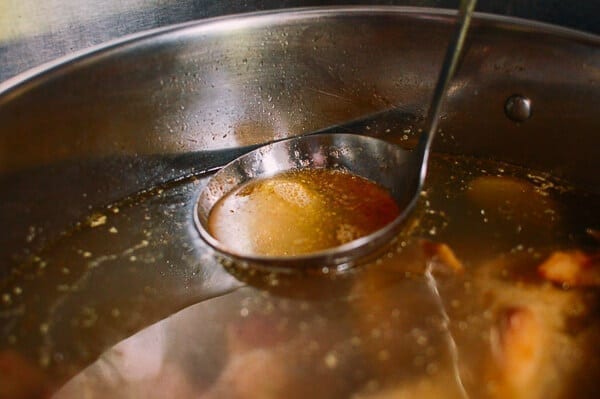
The stock will keep in the refrigerator for a week, and for months if kept in the freezer. We stored ours in mason jars in the fridge––sturdy plastic containers are best for the freezer. If you overfill glass jars and freeze them, you run the risk of them shattering!
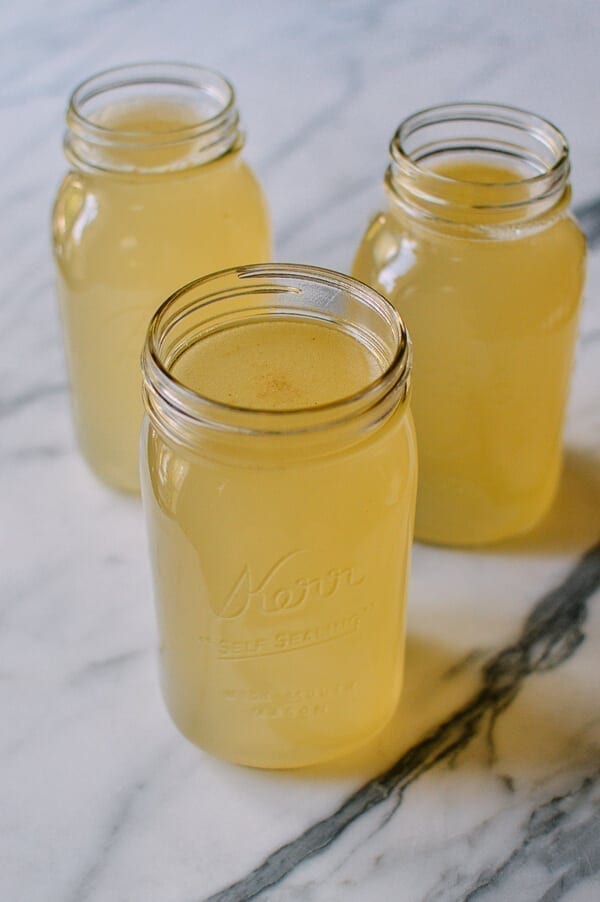
So what do you do with the pork bones and the chicken afterwards? For the pork bones, we usually just eat them with some light soy sauce––it’s delicious, trust me.
As for the chicken, it’s quite dry and flavorless by the end of the simmering process. Debone any meat, and feed it to you or your neighbor’s dog! We mix the leftover chicken meat into Barley’s kibble, and she loves it!
Looking for more authentic recipes? Subscribe to our email list and be sure to follow us on Pinterest, Facebook, Instagram, and Youtube!
Recipe
Pork and Chicken Stock
Ingredients
Instructions
- Soak 2 pounds of chicken bones and 2 pounds of pork bones in water for about 1 hour in order to get rid of any blood or impurities. It’s best to change the water 1 to 2 times over the course of this process. Drain and set aside. This step will help ensure you get a clear stock.
- Add all the stock ingredients (except the salt) to a large stock pot, and bring to a boil on the stove. Once boiling, immediately reduce the heat to low. Skim away any impurities (foam, large floating particles, etc.) that float to the top. Cover and simmer at your stove’s lowest setting for at least 5 hours. To help you gauge the right heat level, the liquid in the pot should be moving slowly, but there shouldn’t be any large bubbles.
- A slow simmer cooks the stock and keeps it clear at the same time. When the stock finishes cooking, turn off the heat, and let it cool before storing the stock in freezer containers. Please use clean utensils throughout this process. The stock will keep in the refrigerator for a week, and for months if kept in the freezer.





